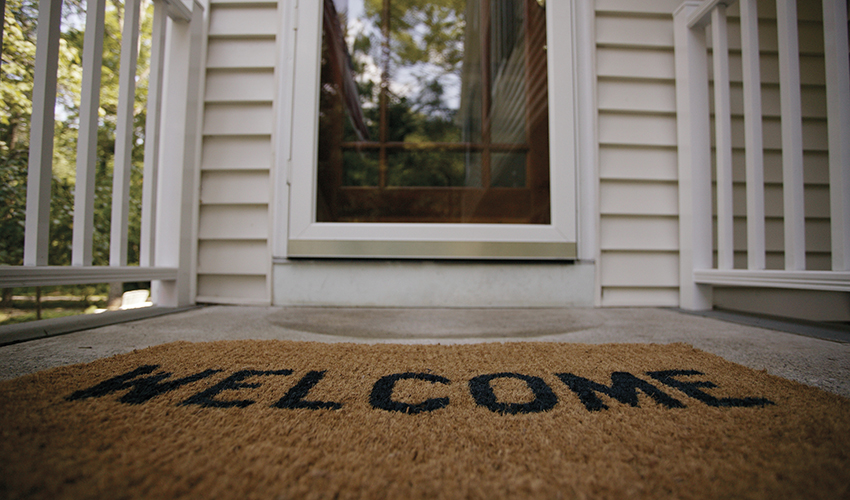Upgrade Your Exterior Doors for Energy Savings

When considering home improvement projects that increase energy efficiency and lower utility bills, most homeowners think replacement windows or insulation. But upgrading your exterior doors is an easy, cost-effective way to save energy and money while creating a comfortable, healthier indoor environment. Read on to learn how:
Air Leakage
Old, ill-fitting, or uninsulated entry or patio doors can contribute to air leakage during the winter and summer months. Unwanted outside air enters your home and inside air escapes through cracks, gaps, and openings you may not even know exist. Air leakage can also cause moisture issues. This can result in dangerous mold growth and poor indoor air quality. Weatherstripping or caulking the gaps can help reduce air leaks and energy loss, but new energy-efficient exterior doors are designed for a better fit and increased insulation, and can eliminate drafts.
Types of Energy-Efficient Doors
An energy-efficient door acts as a seal between the outside and inside temperatures of your home. This prevents an unwanted heat exchange, which could save you money. There are many options available when looking to upgrade your doors:
Fiberglass
Fiberglass is one of the most energy-efficient materials available today. It’s highly durable, weather-resistant, and relatively low maintenance. In addition, fiberglass doors won’t crack, shrink, or warp, giving them a longer lifespan than other materials such as wood. In general, fiberglass doors are moderately priced, so replacing your existing door with a fiberglass one is a good investment that will pay for itself in energy savings down the road.
Vinyl
Vinyl is another material that’s durable, weather-resistant, and energy efficient. A vinyl door provides good thermal insulation, which prevents air from entering or escaping your house during the hot and cold months. Premium vinyl resists deterioration, corrosion, and insect infestation.
Steel
Like a refrigerator door, most steel doors use magnetic weatherstripping that forms an airtight seal to prevent air from escaping or entering your home. Steel doors often have tighter-fitting frames and a higher R-value than other materials. This results in better insulation for your home. Moreover, steel doors are generally less expensive compared to fiberglass or vinyl.
Wood
A widely popular option, doors made from wood are the least energy efficient of all the materials. Wood tends to be a poor insulator of heat and can even absorb heat in the warmer months. Most wood doors have a polyurethane foam core that increases its energy efficiency, but only nominally. While wood is an attractive option relative to curb appeal, there are better alternatives for energy savings available.
Glass
Glass doors are poor insulators and tend to lose more heat than other types of doors. However, most manufacturers install low-emissivity coatings on glass, which control the heat transfer better but tend to cost more. There are do-it-yourself low-e coating kits available to apply at home. These films are relatively low-cost and may last up to 15 years without peeling, a good alternative for the budget-conscious homeowner.
Upgrading your exterior doors could lead to significant energy savings. Selecting the right door for your home’s exterior is a big decision. Before you buy, it’s advisable to check NFRC performance ratings to find the right door for your lifestyle and budget.
Let the experts at Spotless & Seamless Exteriors help make choosing a door a little easier. We are a Twin Cities home exteriors contractor offering a wide selection of doors from Waudena Millwork. Materials include high-quality steel, fiberglass aluminum, vinyl, wood, and others designed for high-functionality and performance all year round. Contact us today.


